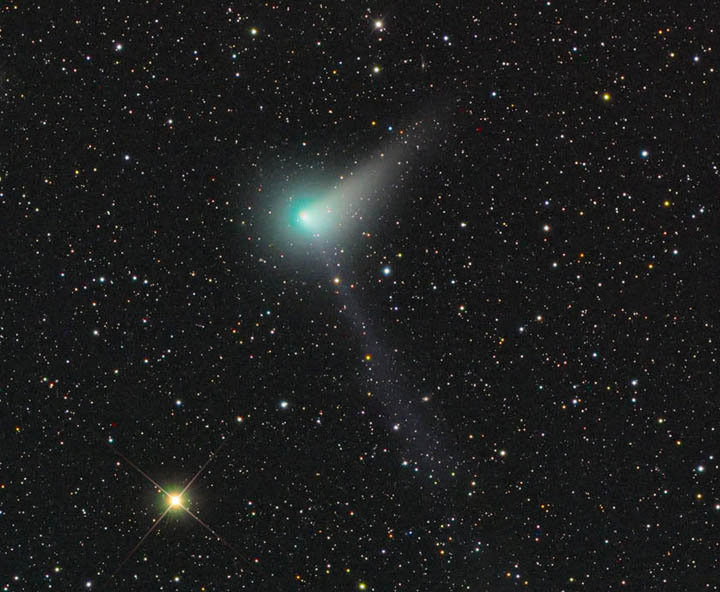Comets are primitive solar systems objects composed primarily of ice and also contain components of rock and dust. As comets approach the inner solar system the sunlight begins to activate the frozen molecules within the comet's nucleus and it begins spewing dust, gas, and ions forming a large gaseous atmosphere around the nucleus called the 'coma', and a long 'tail' of gas and dust. Cometary coma can be a large as planets, and comet tails can extend for millions of miles into space. Large comets that venture into the inner solar system with close approaches to the sun and are well positioned for viewing from Earth can put on spectacular displays. Some comets have been bright enough for daytime viewing. The source regions for comets include three regions within the solar system: 1) the Oort cloud, a spherically-shaped halo of icy bodies at the very edge of our solar system (5,000 to 200,000 AU); 2) the Kuiper Belt, another distant region of icy worlds, shaped more like a disk and located outwards from Neptune up to 50 AU; and 3) within the Main Belt of asteroids, some apparent 'asteroids' have been observed to have comet-like activity; the source of these Main Belt active asteroids or comets remains un-resolved.

Discovered in 2015 by CSS observer Jess Johnson, Comet Johnson c/2015 V2 became a backyard observable object, visible with binoculars in May 2017. This comet displayed two tails: a wide and bright dust tail, and a narrower ion or gas tail at nearly a right angle to the dust tail. Image by Rolando-Ligustri.



